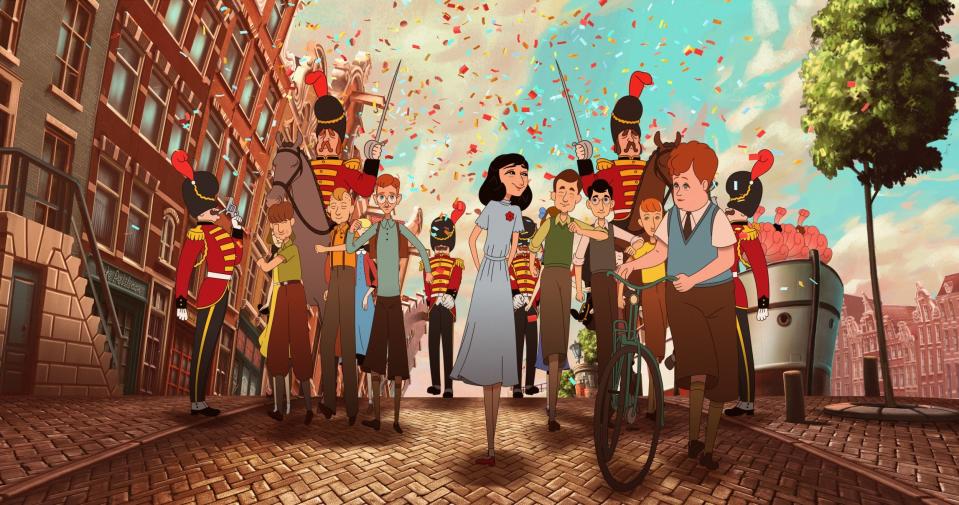Where is Anne Frank, review: a frightening time-hop between past horrors and present-day prejudice

The Israeli director Ari Folman is renowned for using animation to make sense of the past, as in Waltz with Bashir (2008), his celebrated account of the 1982 Lebanon War and his own buried memories of that trauma. His new film, Where is Anne Frank, doesn’t need to make sense of Anne Frank’s diaries – they speak for themselves – but instead builds a bridge to the present day, where Folman finds a troubling deafness to the very lessons, and alarm bells, that her legacy ought to have guaranteed.
While flashbacks to the story of Anne (voiced by Emily Carey) are a crucial part of the film, they are not entirely the main event. Folman begins “a year from now” at the Anne Frank Museum in Amsterdam, in the early hours of a dark and stormy morning. The glass case containing Anne’s diary is smashed, and the ghost of a young, red-headed girl materialises.
This is not Anne herself, but Kitty (Ruby Stokes), the imaginary friend to whom she addressed her writing. Wandering through the empty rooms of Anne’s old house, Kitty emerges bewildered into contemporary Amsterdam, and promptly files a missing person report with the Dutch police, who laugh at her, pointing out everything Anne Frank has her stamp on in the city – the school, bridge, theatre and hospital carrying her name.
Anne Frank is everywhere, they point out. And yet Folman makes the argument that she truly has disappeared, reckoning in this film with the rising tide of anti-immigrant feeling in Europe, and indeed the resurgence of anti-semitism.
On her travels, Kitty befriends a Malian family at the rough end of government crackdowns on asylum seekers. Parallels with the ghetto purges are clear to us before they could possibly be to Kitty. She begins oblivious to Anne’s fate, so the character’s horror at those discoveries makes her an effective surrogate for younger viewers just beginning to learn about the Holocaust.

Beyond some off-putting voice acting in the smaller parts, the weakness of Folman’s film is falling back too hard on young-adult formulae to stay accessible: as a teaching aid, it makes some coy manoeuvres to help its didacticism slip down. Kitty, for instance, gets her own cute boyfriend called Peter, a counterpart to the Peter who hid out with Anne in the Secret Annex.
There’s a moving gravity, all the same, to the way this pair retrace Anne’s final journey east, into a hellscape Folman fuses with the underworld of Greek mythology, with which Anne was obsessed. (Folman’s own parents were brought to the gates of Auschwitz the same week as Anne’s family, but ultimately survived.)
The images here of stomping Nazi ghouls, with identical white masks and dementor-like cloaks, are intentionally abstracted. This has caused a degree of controversy, in that it seems to be letting individual humans off the hook, but in the stylised realm of animation, Folman can avoid giving us a gallery of rent-a-baddie caricatures. As automata, they’re grimly frightening: this is not the human face of fascism, after all, but the undead spectre of it, refusing even now to go away.
PG cert, 100 min. In cinemas from Friday August 12

 Yahoo Movies
Yahoo Movies 